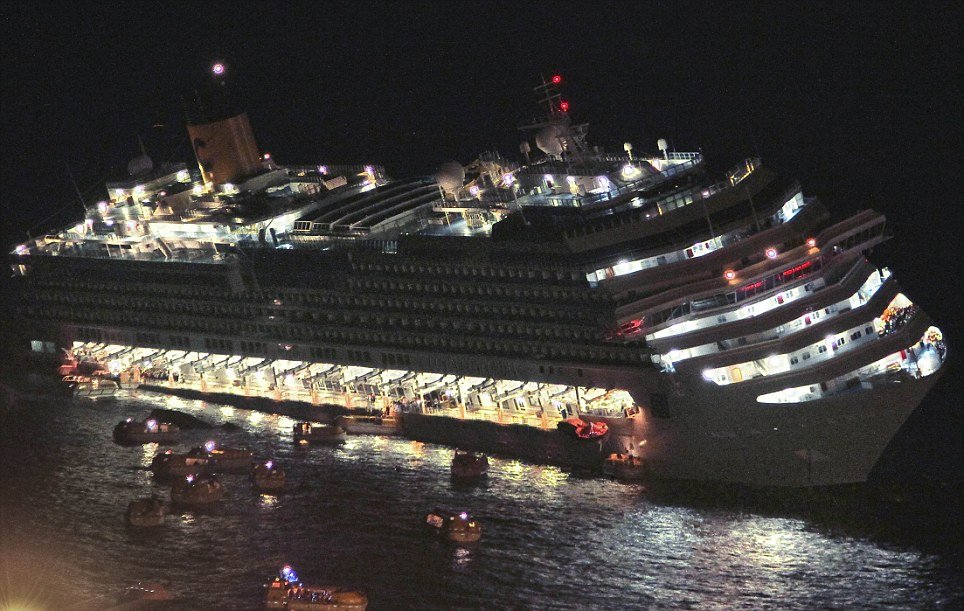
Dramatic pictures, released this evening, show the aftermath of the Costa Concordia disaster as like a scene from the Titanic.
Lifeboats can be seen spilling from the sides of the ship into the gloomy waters off the island of Giglio as Costa Concordia cruise liner sinks into the sea.
Passengers can be clearly seen on the stardboard side waiting to climb aboard those lifeboats which haven’t already been deployed.
Holidaymakers, who moments earlier had been enjoying dinner on the luxury vessel, can also be seen making their way around the heavily-banking prow of the ship.
And the whole dramatic scene is lit up like a Hollywood movie by the many lights on the cruise ship, which would soon plunge into darkness as it sank into the water, claiming at least 16 lives.
Today, search efforts aboard the doomed liner continued, but an official overseeing the operation acknowledged for the first time that it would take a miracle to find any more survivors.

Franco Gabrielli, head of Italy’s national civil protection agency, said rescuers would keep searching the ship, which is half-submerged in the Tyrrhenian Sea off the island, until every reachable area is inspected.
“Finding someone alive today belongs in the realm of miracles,” Franco Gabrielli said.
“But since none of us, at least inside, wants to give up on that possibility, we will continue.”
Operations today saw search teams set off more explosions on the submerged third floor deck to allow easier access for divers.
Seventeen people are still unaccounted for, but the last person to be found alive was on January 15 when a senior crew member was discovered less than 36 hours after the grounding.
Costa Concordia ran aground after Captain Francesco Schettino veered from his approved course and gashed the ship’s hull on a reef, forcing the panicked evacuation of the 4,200 passengers and crew.
On Wednesday, the chief executive of Costa Crociere SpA, Pier Luigi Foschi, insisted that Francesco Schettino didn’t have approval to change the ship’s routing and was going far too fast to be so close to shore.
But he defended the practice of so-called “tourist navigation”, whereby enormous cruise ships steer close to shore to give passengers a look at the sites. Luigi Foschi said it was part of the “cruise product” that passengers demand and that cruise lines are forced to offer to stay competitive.
“It’s something that enriches the cruise product,” Luigi Foschi told a parliamentary committee.
“There are many components of the cruise product, and we have to do them like everyone else because we are in a global competition.”
Costa is owned by Miami-based Carnival Corp., the world’s largest cruise company.
Luigi Foschi stressed that such deviations from charted routes are supposed to follow strict protocols that ensure safety: ports are informed, the company is informed, and certainly no ship of the Costa Concordia’s size would be charging 200-300 yards (meters) off shore at 16 knots.
“For anyone who knows that zone, that ship with those characteristics shouldn’t have been there,” Luigi Foschi said.
Francesco Schettino is under house arrest, facing accusations of manslaughter, causing a shipwreck and abandoning a ship before all passengers were evacuated.
On Wednesday, Francesco Schettino’s lawyer filed a motion challenging the house arrest, saying the captain wasn’t a flight risk and asserting that there was no risk that he would repeat the crime since no cruise line would hire him, the ANSA news agency reported.